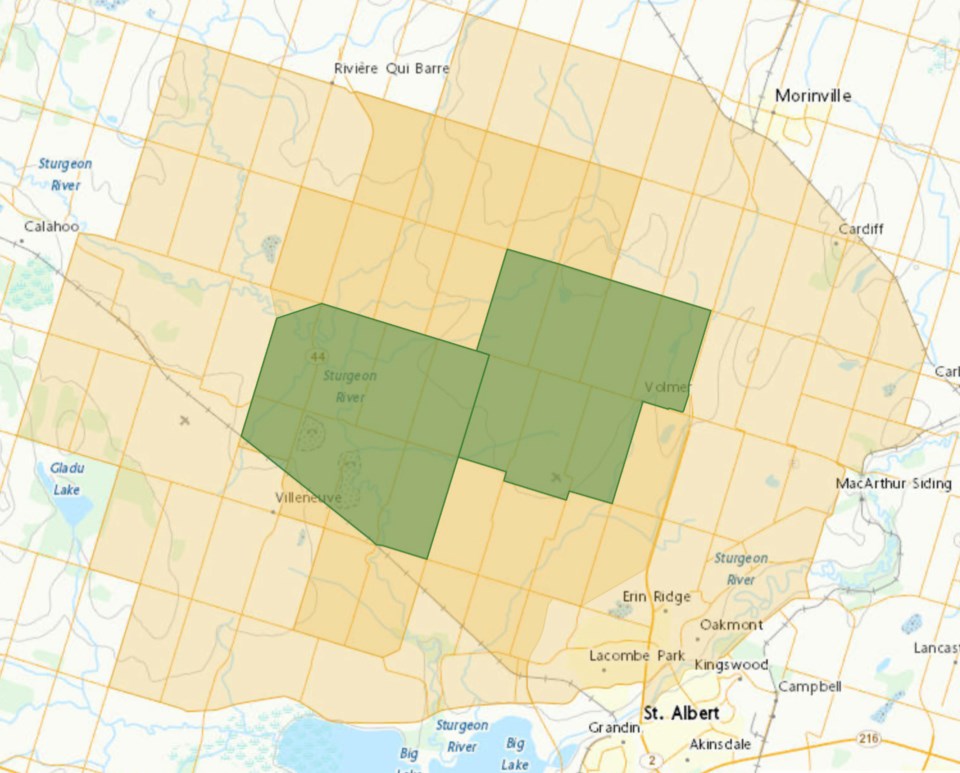A highly transmissible strain of bird flu has been detected in a non-commercial poultry operation in Sturgeon County, according to the federal food agency.
The outbreak follows a separate commercial poultry operation in another area of Sturgeon County last month. Since April 6, 2022, the CFIA said, there have been 50 infected premises in Alberta. Of the 50 premises, 15 have been non-commercial while the remaining 35 were commercial operations.
As of Oct. 12, the CFIA estimates that highly pathogenic avian influence (HPAI) has impacted 1,319,000 birds in Alberta, which is more than any other province. In total, 3,119,000 birds have been affected across Canada this year.
In 2021, the total number of chickens, turkeys, and stewing hens produced for consumption in Alberta was about 78 million, according to Statistics Canada. In the same year, a little more than 86 million eggs were produced in Alberta as well.
As there is no treatment for HPAI, birds that are infected or suspected of being infected with the virus are killed as part of the CFIA's disease management strategy. Wild birds infected with HPAI commonly die as a result of contracting the illness.
“The risk of avian influenza increases during seasonal wild bird migration and the Alberta Poultry Industry Emergency Management Team considers the current risk to be extreme," the CFIA told The Gazette. “Licensed backyard hen owners should follow good biosecurity practices that will avoid exposure to wild birds."
"Members of the general public can help mitigate the risk of avian influenza by cleaning their footwear after visiting areas where wild birds congregate such as parks so that the virus is not tracked to other locations," the CFIA said.
As a result of the detection announced by the Canadian Food Inspection Agency (CFIA) on Oct. 5, many neighbourhoods in St. Albert are now considered a restricted area for any movement of susceptible birds, bird products, and byproducts.
The restriction only applies to commercial and non-commercial poultry operations that are transporting live birds; byproducts such as deadstock and manure; and products such as hatching eggs, table eggs, meat, and processed meat products, according to the CFIA.
In order to transport birds and the products described previously, operators will need to obtain a "general permit" from the CFIA. An application form can be downloaded and submitted online.
“Domestic use (for personal use) and distribution of retail meat, meat products, fully cooked meat, egg product and processed egg are exempt from permitting requirements," the CFIA said.
The part of St. Albert included in the restricted movement area is every neighbourhood north of Sturgeon Road, except for Mission. Parts of Sturgeon County surrounding the infected zone are also currently restricted. The exact boundaries of the infected and restricted zones can be found on the CFIA's website. The only locality included in the infected region is Volmer.
The CFIA did not say which non-commercial poultry operated HPAI was detected in.
While parts of St. Albert have been included in a restricted zone because of the nearby infected premises in Sturgeon County, Kathy Magor, a biological sciences professor at the University of Alberta said she thinks the outbreak is localized to the non-commercial operation, and not present in St. Albert.
“They’ll draw a line on the map and … it’s not that there’s avian flu in all those places, there’s avian flu in that region in some commercial and non-commercial breeders," she said.
Magor, who specializes in the study of avian influenza, says the risk of the virus spreading between birds and other animals is minor.
“So far the spread has been largely bird to bird," Magor said. "Where we have seen transmission is animals that eat dead animals."
"This particular strain of bird flu, H5N1, can infect lots of different things, including people, but it doesn’t transmit easily from animal to animal," she said.
"It transmits easily from bird to bird but not from human to human at all," Magor said.
The expert said the risk imposed by H5N1, which was detected in North America for the first time in Newfoundland in December of last year, is extreme.
"[There is] lots of danger in it becoming endemic where we see it all the time," she said. "That’s particularly worrisome with H5N1 because it can transmit to other species.”




